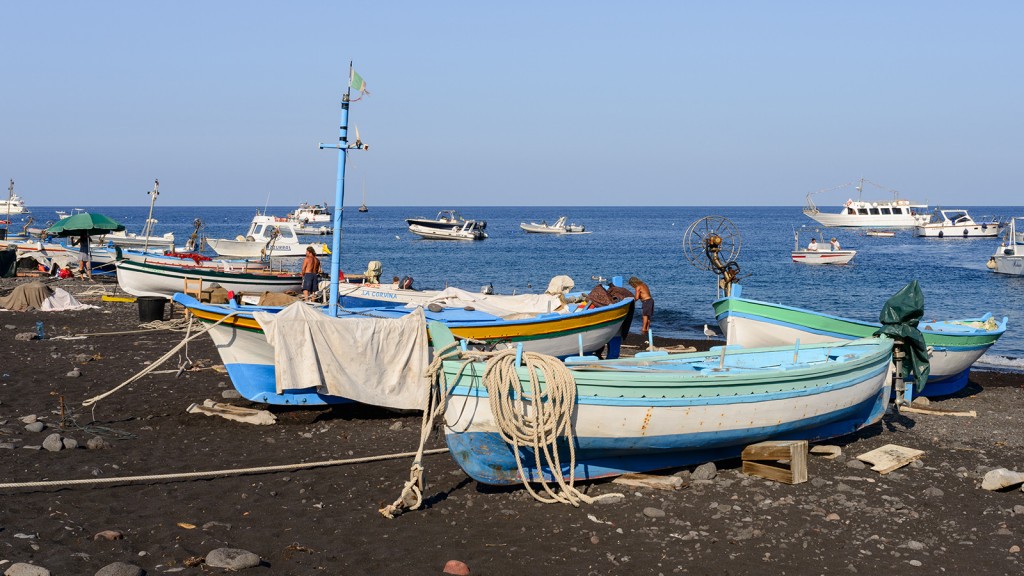The volcanic Aeolian archipelago, a UNESCO World Heritage Site, is located north of Sicily in the Tyrrhenian Sea and includes seven islands – Stromboli, Vulcano, Salina, Filicudi, Alicudi, Panarea and Lipari – and an islet, Basiluzzo.
The largest and most populated of them is Lipari, whose capital (also called Lipari) provides an excellent base from which to explore these beautiful islands, with their black sand beaches, active volcanos and rocky coastlines. Named by Greek settlers after Aeolus, god of winds, the archipelago is home to about 10,000 people, a number that swells to 200,000 during the summer months.
Here are our recommendations of the best Aeolian Islands to visit.
1. Stromboli
When Ingrid Bergman and Roberto Rossellini shot the classic film Stromboli, terra di Dio in 1949, there were no hotels on the island. The crew had to stay with the locals, many of whom were extras in the film. After Stromboli’s success, tourists began arriving, attracted by the rugged landscape and black sand beaches featured in the film, and this is how the island’s tourism industry began.
Strictly speaking, there’s not a whole lot to do here: the terrain is occupied almost entirely by the volcano, only the northeastern corner being inhabited, there are no roads and up until recently there was no electricity in Ginostra, the island’s second settlement on the west coast. Life is harsh on Stromboli: food and drinking water have to be ferried in and during winter storms the islands is sometimes cut off from mainland for days.
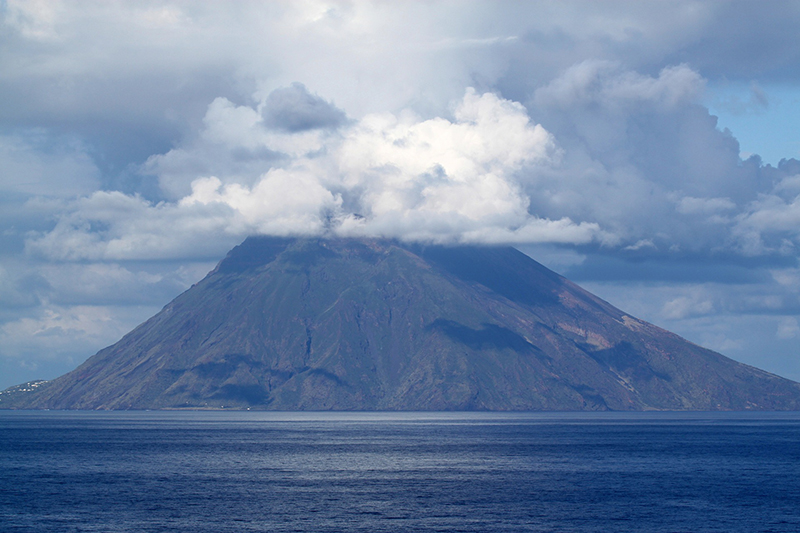
Still, coming here is well worth the time, as few islands offer such untamed beauty along with the chance to climb a volcano that’s been in a continuous state of eruption for 2,000 years. The guided tours to the summit of Stromboli usually take 2 hours and they’re organized so that tourists reach the top at sunset. A shorter route that doesn’t require a guide starts in Piscita (2 km west of the port) and takes tourists to Sciara del Fuoco viewpoint, overlooking the black lava trail running down the volcano’s northern flank. The small black sand beaches in Piscita are said to be the best in the Aeolian archipelago.
We recommend Porto di Tropea marina, located 60 km straight distance away, in the city of Vibo Valentia.
2. Panarea
The most expensive and fashionable island in the archipelago, Panarea is also the smallest. The 280 residents see their numbers dramatically increase in summer months, when the island becomes what W Magazine described as “the epicenter of the chicest summer scene in the Mediterranean, the place where the jet-set goes to escape the rest of the jet-set”. The exclusive Hotel Raya and Bridge Sushi Bar are the place to be if you want to run into celebrities or even European royalty.
Raya began in the 60s as a guesthouse owned by artists Myriam Beltrami and Paolo Tilche and, as many of their famous friends began visiting, they expanded the property up the hill, building more rooms and terraces from the local limestone. The hotel offers stunning views over Basiluzzo and Stromboli from its beautiful terrace with an infinity pool. They’re even better at night, when the volcano’s explosions light up the sky every few minutes. Hotels on Panarea are generally pretty expensive and usually booked well in advance, but there also affordable options such as staying with the locals, many of whom have guestrooms for rent.
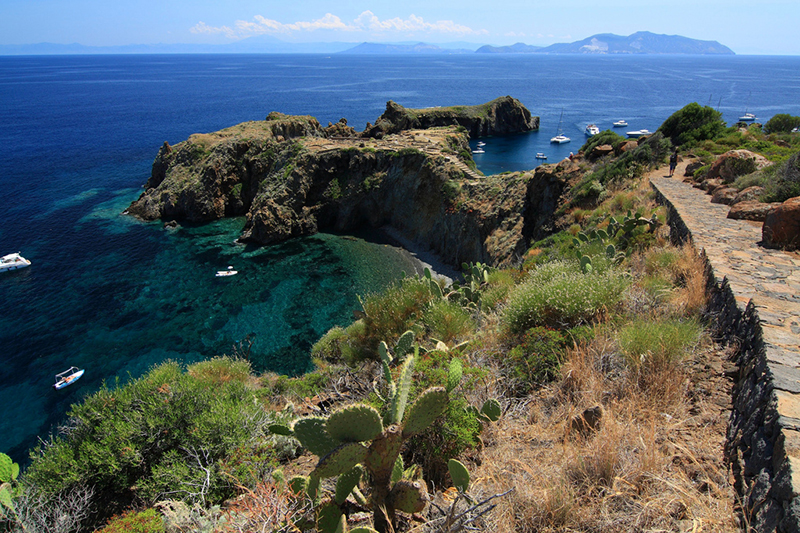
The best beach on the island is Zammara, just a short walk away from the beautiful bay of Cala Junca, where foundations of Bronze Age huts can still be seen. On the other side of the island lies the historic beach of Calcara, that ancient inhabitants believed it was an entrance to the Underworld due to fumaroles steaming through the rocks. Take a boat trip to the islets of Basiluzzo, where underneath the clear waters you can see the remains of a Roman port and Lisca Bianca, for the submarine fumaroles bubbling at the surface of the sea.
Our recommendation is Porto Pignataro marina, on the island of Lipari, the largest in the Aeolian archipelago.
3. Lipari
The archipelago’s largest island, Lipari is also home to its only sizeable community. About 11,000 people live here, either in the main town of Lipari or one of the four villages: Pianoconte, Quttropani, Acquacalda, and Canneto. The mountains are carved out by the many pumice quarries, an important industry on the island. The coastline is rocky and undeveloped, with offshore rocks and amazing views.
There’s a footpath along the coast between Terme di San Calogero and the kaolin quarry at Bagnosecco, where the creamy white surface has been stained indigo, violet, orange, blue and mustard by emissions from steaming fumaroles. Spiaggia Bianca (white beach) gets its name from the white pumice stone from the nearby quarry. Porto di Ponente is a beautiful west facing bay with beautiful views to nearby islands of Salina and Filicudi. The beach here has a very dark sand.
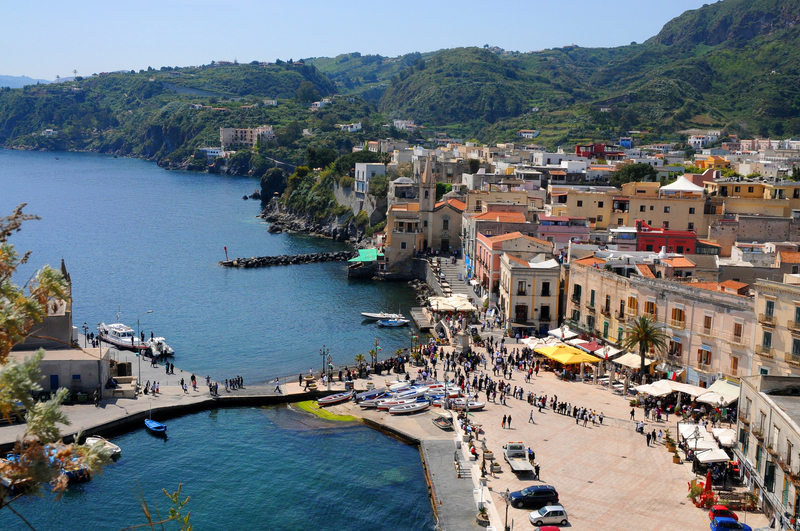
The main town is a lively place with picturesque street, a fortified castle and nice harbor. There’s an archaeological museum showing the Aeolian archipelago’s habitation history and an even more interesting archaeological park. Remains of several towers and medieval walls can still be seen on Lipari, along with Greek and Roman ruins. North of town lies Monte Rosa, a good hiking route that offers views of Canneto to the north and Lipari town to the south.
We recommend Marina Corta, meaning “short marina”, located in Lipari town.
4. Salina
The island of Salina, second largest in the archipelago, lies very close to Lipari and from that distance it looks entirely green with a smooth coastline and two peaks – Monte Fossa delle Felci, the highest in the Aeolian archipelago and Monte dei Porri. There are three towns on Salina – Santa Marina on the eastern coast, Malfa to the north, and Leni to the south-west – and a few villages like Rinella, Capo Faro, Pollara and Lingua. Rinella has a beautiful black sand beach and Pollara, located in a volcanic crater, is the iconic location of the film Il Postino.
The small cove here is home to an old fishing village with houses built on the side of the cliffs, connected by stairs. There are about 200 stairs from the top of the crater. The waters are a good place for snorkeling due to the variety of sea life.
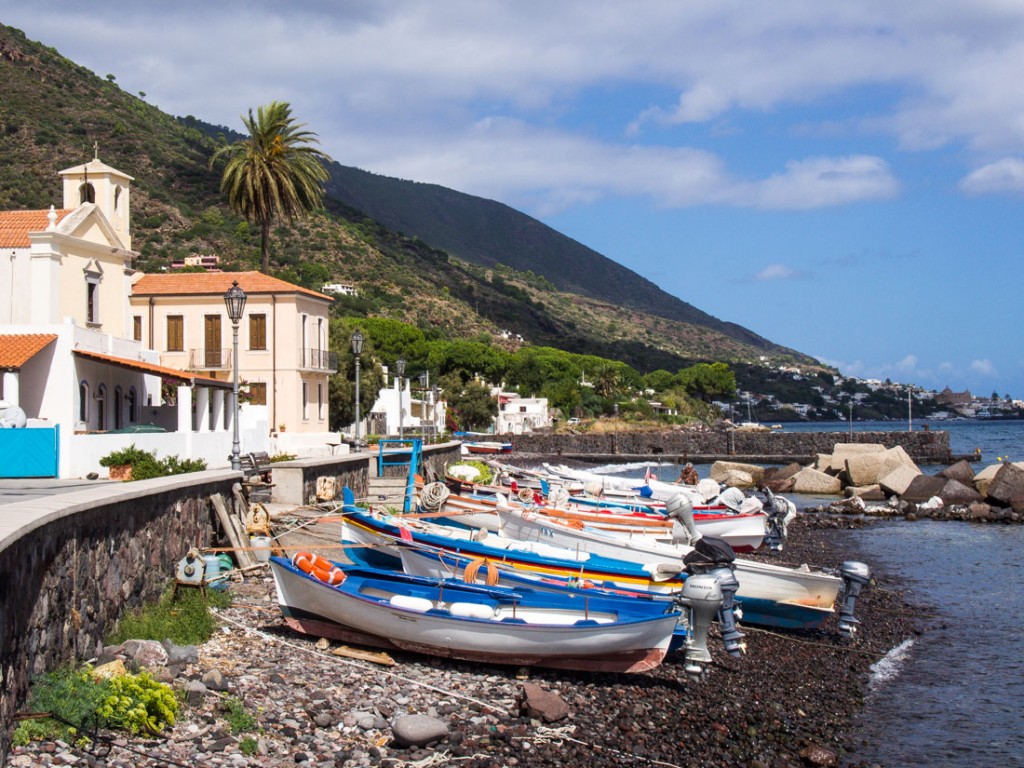
More than 400 different types of plants grow on Salina, including grapes, olives and capers, that locals claim to be the best in the world. The annual caper festival is a three-day party with wine tastings, degustation dinners and even a boat tour around the island. A notable product of Salina is the white Malvasia wine, only made here.
We recommend mooring your boat at Porto delle Eolie in Santa Marina Salina, with natural surroundings that will surely charm travelers looking for an isolated, impressive destination.
5. Alicudi and Filicudi
Alicudi is a small cone shaped island at the westernmost point of the archipelago. It’s home to about 80 people who mostly live off fishing and occasional tourism. Their houses are spread around the slopes and connected by stone steps. It’s said that you can only have two reactions upon seeing Alicudi: you love it or hate it. The climb to the summit is hard but worthwhile, on a clear day all the Aeolian Islands can be seen in the distance. On the way, tourists can see the abandoned San Bartolomeo church.
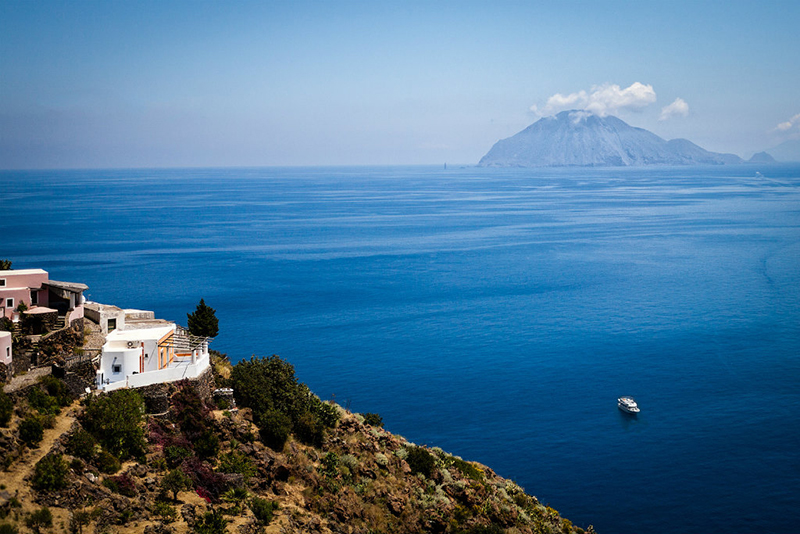
Slightly larger than its western neighbor, Filicudi has a few small villages connected by a tarmac road. It’s a good diving location – the seabed is full of shipwrecks. The island is mostly undeveloped due to its natural reserve status. There’s a small archaeological museum near the port and a prehistoric archaeological park further up the hill. On the opposite direction from the port is Pecorini a Mare, a fishing village where you can eat some of the best shells in the archipelago.
We recommend Porto Pignataro marina, on Lipari island, about 54 km away from Alicudi and 36.5 from Filicudi.

